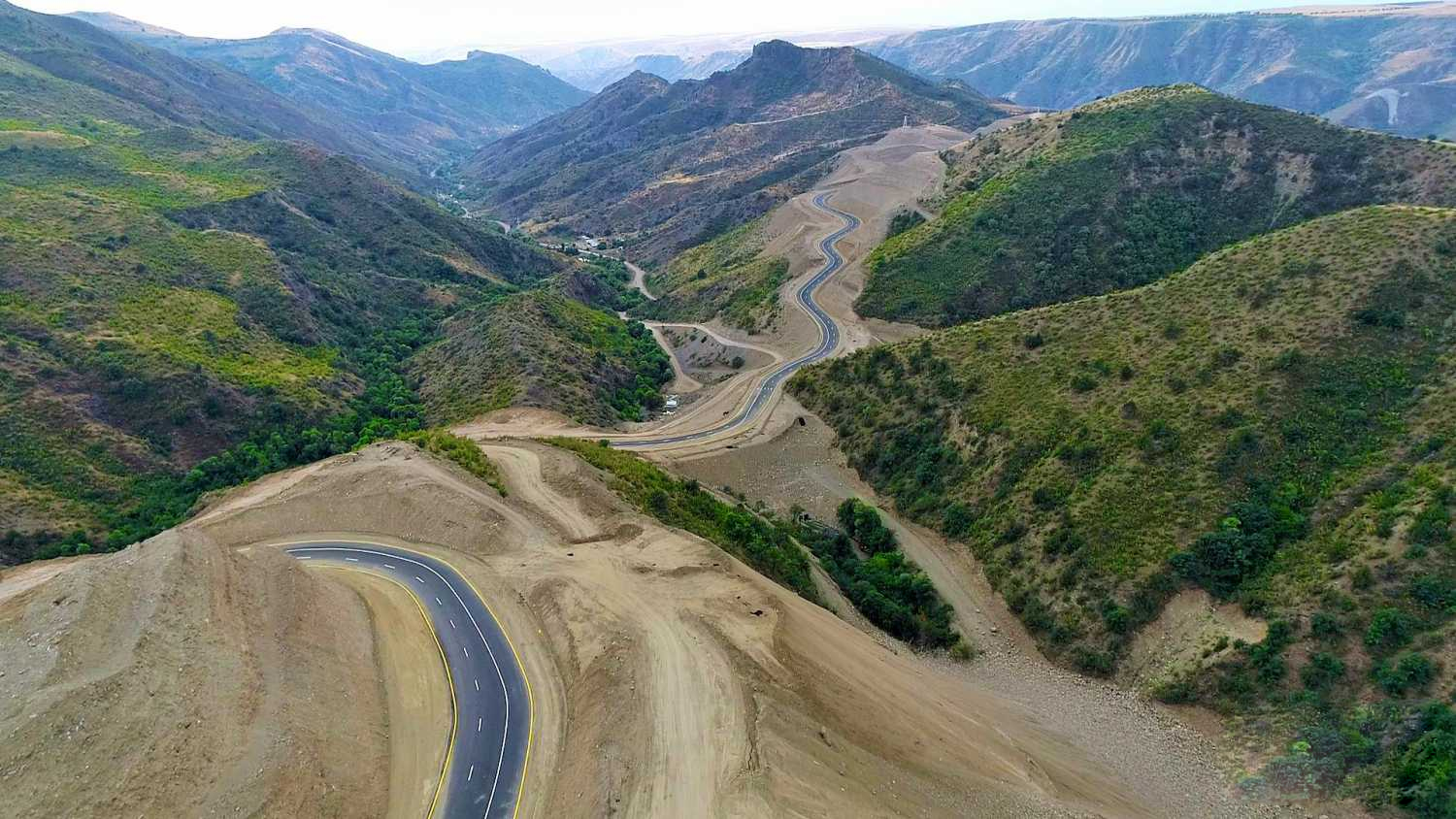Lachin Corridor’s legal regime begs rethinking

By Orkhan Amashov
The idea of tying the Lachin Corridor up with the overland
passage connecting Azerbaijan’s main part with its Nakchivan
exclave predates the Second Karabakh War. Back then, the
proposition was that “the territorial status of the former
Nagorno-Karabakh” and the route linking that with Armenia and what
was later became to be known as the Zangazur Corridor form a web of
interdependence, which Baku and Yerevan could utilise as a
quid-pro-quo arrangement in order to achieve long-term peace.
Some elements of this finely balanced knife-edge arrangement are
still present in today’s Azerbaijani-Armenian discourse, with one
massive exception being that the discussions over the territorial
status of Karabakh’s Armenian-populated section have already been
shelved. Now, it is about the comparison of the legal regimes of
the two corridors and Azerbaijan’s insistence that they should be
connected. Armenia naturally begs to differ, claiming that the 10
November 2020 trilateral declaration contains a mention of one
corridor, and that the Lachin route’s regime is unique and cannot
be replicated anywhere in the southern portion of its
territory.
Beyond the exact details pertaining to the legal regime of the
Lachin Corridor, both Baku and Yerevan also differ regarding its
long-term function. In Azerbaijan, it is viewed as an interim
design which, once the relations between the two countries are
normalised, may even lose its presently exclusive status. In fact,
through maintaining carefully calculated steps and a watchful eye
on the future, Baku has already managed to incrementally reduce any
dormant extraterritoriality that might have been engrained in its
nature.
Article 6 of the trilateral declaration states that the Russian
peacekeeping contingent shall remain in the control of the 5km-wide
corridor, with Azerbaijan guaranteeing the safety of citizens,
goods and vehicles travelling in both directions. Given that
Yerevan's original design was to utilise the whole Lachin district
as a corridor, its width subsequently being considerably reduced
with the Armenian side being deprived of controlling the route, it
was an ideal arrangement for Azerbaijan back in 2020.
The 10 November deal also envisaged the construction of a new
route, which is now operational, along the Lachin Corridor. Unlike
the old route, this is not commensurate with the power lines
connecting Karabakh with Armenia. This also played an integral role
in dismantling the corridor’s old logic, which was based on
severing the ties between the mountainous part of Karabakh and the
rest of Azerbaijan, ensuring that all of its basic needs were met
by Yerevan. It is not a coincidence that, in the official parlance
of Azerbaijan, upon the resumption of control over the city of
Lachin on 26 August, the term “new Lachin road” has predominantly
superseded utilisation of "the Lachin Corridor".
The fundamental point is that the link connecting Karabakh with
Armenia should no longer be viewed as that which Yerevan
consistently portrayed to be a so-called “escape route” in the case
of an emergency and a safety guarantee, but as a simple
communication passage facilitating movement. In view of Baku’s
policy of integrating Karabakh Armenians into a wider rainbow of
Azerbaijani society with fully-fledged citizenship rights, the
route’s exclusivity is being incrementally emaciated.
In an interesting twist, Baku, despite the presence of the Russian
peacekeeping contingent along the Lachin Corridor, has never
complained of extraterritoriality and maintained that its
sovereignty is not encumbered and, in fact, claimed to also
maintain control over that passage. Armenia has stubbornly refused
to accept what it called the “corridor” logic of the Zangazur
passage, in view of Article 9, which mandates that the Border Guard
Service of the Russian Federal Security Service should provide
security along its length.
Moscow’s role is of some delicacy. Over the Zangazur Corridor, it
superficially appears to be supportive of Baku to a measured
extent. But, since Russia is interested in maintaining its
peacekeeping contingent in Karabakh beyond 2025, Baku’s drive for
the full integration of the region’s Armenians into the remainder
of Azerbaijan is something that the Kremlin may consider too
precipitous and undesirable.
Azerbaijan and Armenia expressed their mutual commitment to
recognise each other’s territorial integrity and sovereignty in
Prague on 6 October, simultaneously, yet indirectly, expressing
their willingness that the vision of extraterritoriality enjoyed by
one state at the expense of the factual limitation of another will
not be pursued by either. This, of course, necessitates a slight
overstretching of what could be meant by the recognition of another
state’s territorial integrity. The Brussels track in the
negotiations has achieved some progress over the regime applicable
to the Zangazur Corridor, on the basis that each state must control
its borders and exercise due jurisdiction over the section of the
route traversing its territory. The critical remaining aspect
remains that the connection must be as unobstructed and unimpeded
as possible.
Azerbaijan, by linking the regime of the Zangazur Corridor with
that of the Lachin Corridor, gradually depriving the latter of its
original privileged status, has significantly entrenched its own
territorial integrity over the past few years. Any change to the
post-2020 regime of the corridor connecting Armenia with Karabakh
will require some Russian cooperation in the form of acquiescence,
at the very least. If Azerbaijan and Armenia agree over the
Zangazur project, with its concomitant consequences for the Lachin
route, Russia may find itself compelled to retrench.
---
Follow us on Twitter @AzerNewsAz
